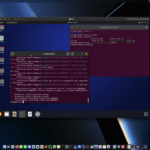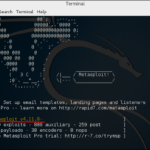
I am a hacker and I get this question a lot. Becoming a hacker is not an easy task, and it requires a lot of hard work, dedication, years of experience and patience. However, if you are willing to put in the effort, you can become a skilled hacker.
The first step in becoming a hacker is to gain a solid understanding of computer systems and networks. This includes learning about operating systems, programming languages, and networking protocols. It is also important to have a strong grasp of the underlying principles of computer science, such as algorithms and data structures. Specific Skillsets, which you are required to learn in order to be a good hacker are:
Operating Systems:
Before you move on to any specific skillset, the first think you need to learn is the operating systems. Specifically, Linux Operating Systems and various distributions.
he Linux operating system is a free and open-source operating system that is based on the Unix operating system. It was first developed by Linus Torvalds in 1991 and has since grown to become one of the most widely used operating systems in the world. Linux is known for its stability, security, and flexibility, making it a popular choice for servers, desktops, and mobile devices.
One of the most notable features of Linux is its ability to be customized and tailored to specific needs. This is achieved through the use of different distributions, also known as distros. A distribution is a version of Linux that includes a specific set of software and features. There are several different types of distributions, each with its own unique characteristics.
One popular type of distribution is the Debian-based distro. This includes distributions such as Ubuntu, Mint, and Debian itself. These distros are known for their ease of use and stability. Ubuntu, for example, is a popular choice for desktop and laptop computers, while Debian is commonly used for servers.
Another popular type of distribution is the Red Hat-based distro. This includes distributions such as Fedora, CentOS, and Red Hat Enterprise Linux (RHEL). These distros are known for their enterprise-level features and are commonly used in large organizations.
Arch Linux is a rolling release distribution with a focus on simplicity and customization. It is a minimalist distro that gives the user full control over the system and its packages. Arch Linux is a great choice for advanced users who want to have full control over their system.
There are other distributions which are designed for specific use cases like Kali Linux for penetration testing, Gentoo for customizing and optimizing system performance, Raspbian for Raspberry Pi and many more.
In addition to its flexibility and customization, Linux is also known for its strong security features. This makes it a popular choice for servers, as it is able to protect against a wide range of security threats. Some of the most popular Linux server applications include:
- Apache: a web server that is used to host websites and web applications.
- MySQL: a database management system that is used to store and retrieve data.
- PHP: a programming language that is often used in conjunction with Apache and MySQL to create dynamic web applications.
- DNS: a service that is used to translate domain names into IP addresses.
- SSH: a secure protocol that is used to remotely access and manage servers.
- Samba: a service that is used to share files and printers between Windows and Linux systems.
Kali Linux (Stay Away): Kali Linux is a Debian-based distribution of Linux that is specifically designed for penetration testing, digital forensics, and other information security tasks. It is one of the most popular distributions among security professionals and hackers, and it is widely used for a variety of different purposes.
One of the key features of Kali Linux is that it comes pre-installed with a wide range of tools and utilities that are commonly used for penetration testing and ethical hacking. These include tools for reconnaissance, scanning, and enumeration, as well as tools for exploiting vulnerabilities, gaining access to systems, and maintaining access. Some of the most popular tools that are included with Kali Linux include Nmap, Metasploit, and Wireshark.
Another key feature of Kali Linux is its focus on customization and flexibility. The distribution is designed to be highly configurable, and it allows users to install and remove tools as needed. This makes it easy to tailor the distribution to suit specific needs and requirements.
Kali Linux is also known for its strong security features. It includes a number of built-in security features such as AppArmor and SELinux, which provide additional layers of security. Additionally, Kali Linux is regularly updated with new security patches and vulnerabilities, making it a secure choice for penetration testing and other security-related tasks.
In addition to its use in penetration testing and ethical hacking, Kali Linux is also widely used in other areas of information security, such as digital forensics, incident response, and network security. It’s also used in the field of wireless penetration testing, as it includes a wide
My suggestion is to stay away from Kali Linux all together. It is best to learn how to install and learn these available scripts on your own so that you know how they operate inside and out.
Programming and Coding:
Once you have mastered the Operating Systems, specifically Linux, the next step to be a good hacker is knowing how to code in Python, C, and C++ Programming Language.
Python, C, C++ are all popular programming languages that are widely used in the field of computer science and software development. Each of these languages has its own unique features and characteristics, and they are often used for different purposes. In the field of hacking, these languages are used to create tools and scripts that can be used to exploit vulnerabilities and gain unauthorized access to systems.
Python is a high-level, interpreted programming language that is known for its simplicity and ease of use. It is often used for scripting and automation tasks, and it is a popular choice for creating hacking tools and scripts. Python is widely used in the field of ethical hacking and penetration testing because it offers a wide range of libraries and modules that can be used to perform various tasks such as network scanning, vulnerability assessment and exploitation, and more.
C is a low-level programming language that is known for its efficiency and speed. It is often used for system-level programming and is the foundation for many operating systems and software applications. C is often used to create hacking tools and exploits because it can be used to directly interact with the operating system and hardware. Some of the most popular hacking tools written in C include Metasploit and Nmap.
C++ is an extension of the C programming language and it is also a low-level language. It was designed to provide object-oriented programming capabilities to C. C++ is often used for creating complex software applications and is widely used in the field of cyber security. It is also used in creating hacking tools and exploits such as the Metasploit Framework and Aircrack-ng.
It is important to note that while these languages can be used to create hacking tools, their primary purpose is to create software applications and solve problems. However, when these languages are used in an unethical way, they can be used to create malicious software and perform cyber attacks. Therefore, it’s important to use these languages ethically and responsibly.
In conclusion, Python, C, and C++ are all popular programming languages that are widely used in the field of computer science and software development. They are also used in the field of hacking to create tools and scripts that can be used to exploit vulnerabilities and gain unauthorized access to systems. Python is known for its simplicity and ease of use, C for its efficiency and speed, and C++ for its object-oriented programming capabilities. While these languages can be used for malicious purposes, their primary purpose is to create software applications and solve problems. It is important to use these languages ethically and responsibly.
Network Security:
Hacking networks refers to the unauthorized access, use, disclosure, disruption, modification, or destruction of computer networks, systems, and data. It is a serious issue that can have significant consequences for individuals, organizations, and governments.
There are several different methods and techniques that can be used to hack into a network, and these can vary depending on the type of network and the level of security that is in place. Some of the most common methods include:
- Social engineering: This involves tricking individuals into revealing sensitive information or credentials, such as passwords or login details. Social engineering can take many forms, including phishing emails, phone scams, and pretexting (impersonating someone to gain access to sensitive information).
- Network scanning: This involves using specialized software to scan a network for open ports and vulnerabilities. Once these have been identified, an attacker can use them to gain access to the network or launch an attack.
- Exploiting vulnerabilities: This involves taking advantage of known vulnerabilities in software or hardware to gain unauthorized access to a network. This can include using tools such as Metasploit to exploit a vulnerability and gain access to a system.
- Password cracking: This involves using specialized software to guess or crack a password in order to gain access to a system or network. This can be done through brute-force attacks, dictionary attacks, or other methods.
- Remote access: This involves gaining access to a network or system from a remote location. This can be done through methods such as Remote Desktop Protocol (RDP), Virtual Private Networks (VPNs), or other remote access tools.
Hacking networks can have serious consequences, including financial loss, data breaches, and reputational damage. It is important to take steps to protect networks from these threats, such as implementing strong security measures, educating employees about security best practices, and regularly monitoring networks for suspicious activity.
Once you have a solid understanding of computer systems and networks, you should start learning about security. This includes studying the methods that hackers use to exploit vulnerabilities in systems and networks, as well as learning about the tools and techniques that can be used to protect against these attacks.
It is also important to practice your skills by participating in hacking challenges and contests. These challenges will give you the opportunity to apply your knowledge in a real-world setting, and will also help you to improve your skills.
In addition to learning about computer systems and security, it is also important to develop your problem-solving skills. This is because hackers often need to think outside the box and come up with creative solutions to complex problems.
Another important aspect of becoming a hacker is to stay up-to-date with the latest developments in technology. This includes reading about the latest security threats and vulnerabilities, as well as staying informed about new tools and techniques that are being developed.
Finally, it is important to remember that becoming a hacker is a lifelong journey. There is always more to learn, and it is important to be willing to continue learning and growing throughout your career.
In conclusion, becoming a hacker is not an easy task and requires a lot of hard work and dedication. However, by gaining a solid understanding of computer systems and networks, learning about security, practicing your skills, developing your problem-solving skills, staying up-to-date with the latest developments in technology, and being willing to continue learning and growing throughout your career. You can become a skilled hacker.







